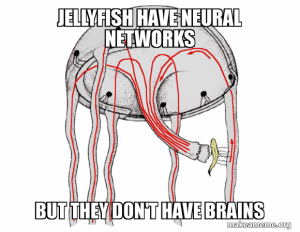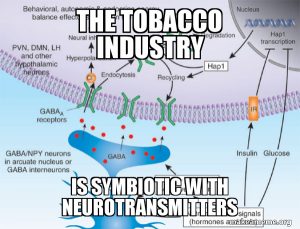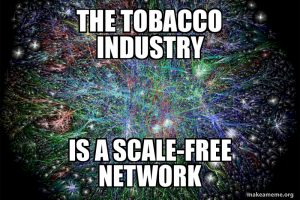Before neurotransmitters, there was bacterial signalling, for example, quorum sensing in bacteria. Signalling with small polypeptides can solve certain kinds of decision problems, for example, the exploit vs explore problem in slime molds (basically, the trade-off of effort searching for new food sources, vs. “exploiting” (eating) the current food source). It can be shown that the slime mold solves the two-armed bandit problem quite well, but not as well as the best possible algorithm (explore vs exploit is a mathematically known as the “two-armed bandit problem“). There are two problems: speed of processing is limited by the rate of diffusion of the signalling molecules, and there is a huge amount of cross-talk, because the signalling molecules spread everywhere.
Jellyfish solve this problem by inventing the neuron. Its really the neuron that is the star-gate for neuro-transmitters: neurons provide point-to-point connections, so little or no cross-talk, and extremely fast — milliseconds for a neuron spike (a soliton) to travel a meter, which is tens of thousands of times faster than diffusion for the same distance. The result really is a star-trek like increase in the information-processing ability of structural arrangements of biomolecules.

The problem with jellyfish, though, is that they have trouble deciding when to eat, and when to flee predators. So they don’t … they do both at the same time. Which maybe is not so good for survival. Deciding “what to do” is called “action selection”. Here’s a nice article explaining how brains are smarter than neural nets (and no, they are not the same thing). Tony J. Prescott (2007) “Forced moves or good tricks in design space? Landmarks in the evolution of neural mechanisms for action selection“.
The point of the story about the global brain is that things don’t just stop with the brain: we have all of sociology and civilization in front of us. A reasonable place to start is with the idea of a “psychotechnology”: for example, that a 24-letter phonetic alphabet, spread by Ancient Phonecian sailors, really is better than Egyptian Hieroglyphics. John Vervaeke has a 50-part lecture series on this: “Awakening from the Meaning Crisis“. Some more advanced conceptions of meaning are explored in the books by David Chapman on meaningness.com. There is a vast amount of material there, so maybe starting in the middle is a good place.

Beyond the concept of a meme is the “teme” – roughly, a “technological meme”. The tobacco industry is a great example. It co-exists with a set of neural feedback loops, that reinforce nicotine craving with time-scales varying from milliseconds to minutes, with distinct feedback loops operating at 15-minute, multi-hour, week-long and multi-month-long scales. Each of these feedback loops is distinct from the others, but inter-coupled, which is why quitting smoking is so hard. Even if, through sheer will-power, you’ve gone without a cigarette for a week, there is one more feedback loop that is still running that is still saying “nicotine feels good.”
But scientists don’t know everything… it was politicians who figured out that there was yet one more feedback loop, this one involving advertising and marketing. To break addiction, you have to break the advertising/marketing feedback loop. This is a formidable loop, because a trillion dollars a year is very powerful.

This is not my idea: apparently, Nicolas M. Kirchberger talks about this in a book which I have not read: “The Evolving Self”, which someone else described as so:
“Most manufactured goods enter in this category, like cigarettes being a kind of replicator that uses smokers to replicate; once they start replicating, they can’t be stopped so easily and tend to grow as much as they can to fill the market regardless of ‘people’s intentions’. Seen like that, those kind of problems appear much more complex to manage…”
To rephrase more accurately, all temes are of this form: they consist of global manufacturing lines and supply chains interacting with small peptide molecules, up- and down-regulated DNA and RNA, ribosomes and protein expression, neural feedback loops, individual humans, fiber-optic trans-oceanic networks and cloud computers, corporations, laws that restrict marketing and promote product safety, all operating at or near the edge of a phase transition. I say”phase transition” because this is where mathematics meets systems theory. Don’t let high-school physics fool you: our mathematical understanding of phase transitions exploded during the 1980’s and 1990’s, and has become quite sophisticated, with tentacles into analytic combinatorics, number theory and even string theory. If you want to understand complex systems, you have to understand this theory.
What does this long footnote have to do with AGI? Well, AGI slots into this system of global supply chains and manufacturing systems. Existing AI algorithms are used to not only inform/misinform voters on political issues, but also improve manufacturing and shipping. The AGI algorithms will be deployed into this infrastructure, as a particularly powerful controlling feedback loop. The boundaries of AGI are fuzzier than you think, and the future is closer than it appears.
The above blog post used to be a footnote to my earlier post, AGI Career Advice. But that footnote wanted to be free, so here it is. This post also appears in medium.com.
Leave a Reply